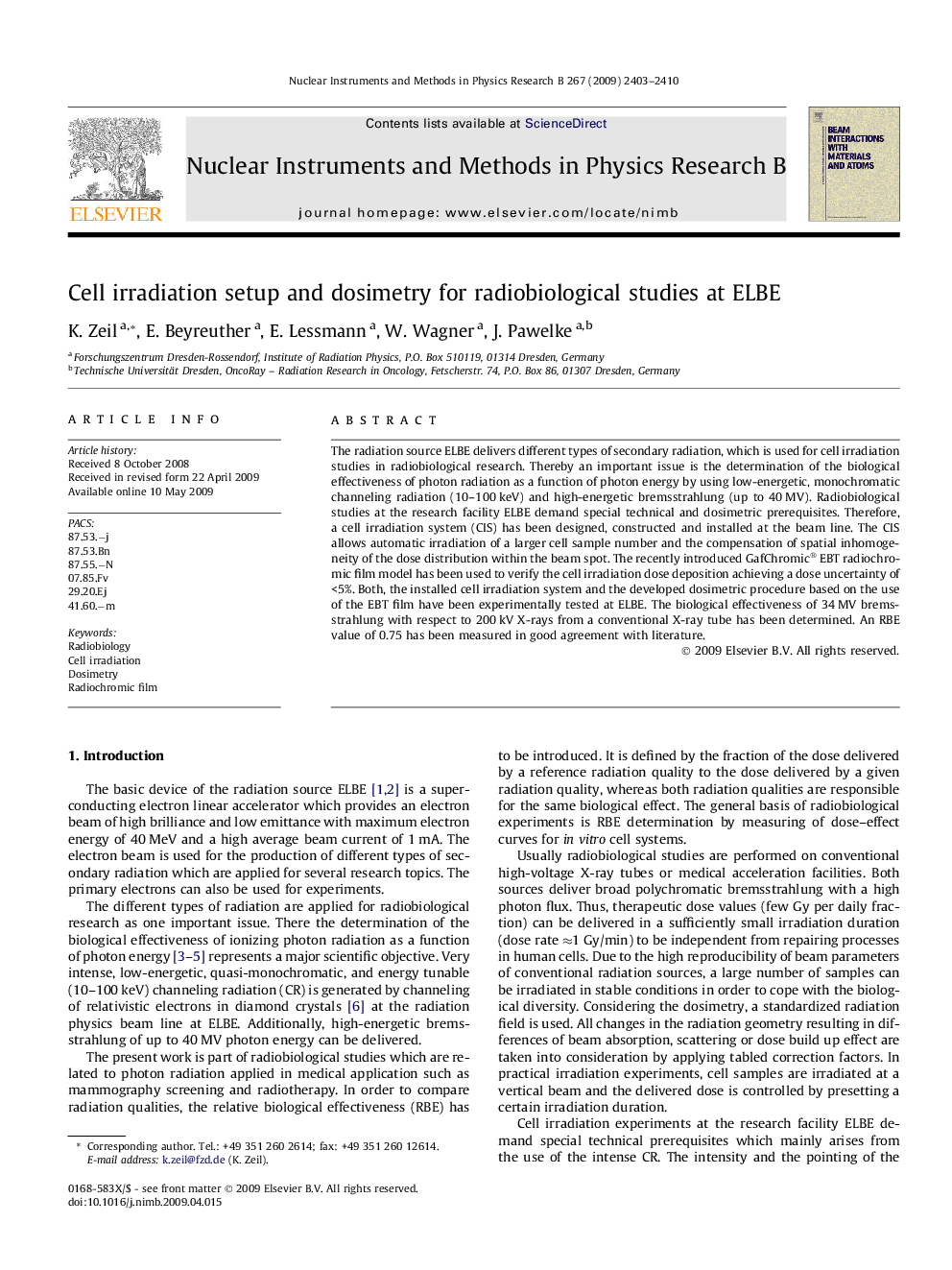| Article ID | Journal | Published Year | Pages | File Type |
|---|---|---|---|---|
| 1683889 | Nuclear Instruments and Methods in Physics Research Section B: Beam Interactions with Materials and Atoms | 2009 | 8 Pages |
Abstract
The radiation source ELBE delivers different types of secondary radiation, which is used for cell irradiation studies in radiobiological research. Thereby an important issue is the determination of the biological effectiveness of photon radiation as a function of photon energy by using low-energetic, monochromatic channeling radiation (10-100Â keV) and high-energetic bremsstrahlung (up to 40Â MV). Radiobiological studies at the research facility ELBE demand special technical and dosimetric prerequisites. Therefore, a cell irradiation system (CIS) has been designed, constructed and installed at the beam line. The CIS allows automatic irradiation of a larger cell sample number and the compensation of spatial inhomogeneity of the dose distribution within the beam spot. The recently introduced GafChromic® EBT radiochromic film model has been used to verify the cell irradiation dose deposition achieving a dose uncertainty of <5%. Both, the installed cell irradiation system and the developed dosimetric procedure based on the use of the EBT film have been experimentally tested at ELBE. The biological effectiveness of 34Â MV bremsstrahlung with respect to 200Â kV X-rays from a conventional X-ray tube has been determined. An RBE value of 0.75 has been measured in good agreement with literature.
Keywords
Related Topics
Physical Sciences and Engineering
Materials Science
Surfaces, Coatings and Films
Authors
K. Zeil, E. Beyreuther, E. Lessmann, W. Wagner, J. Pawelke,
